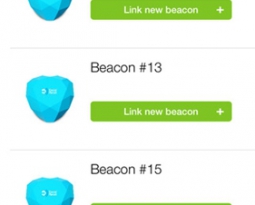
Traveling, especially via commercial airlines, has become an increasingly stressful customer experience. Long lines, rising ticket prices and an ever growing list of queue complications force consumers to arrive at the airport hours in advance, just to wait in long lines, risk a missed flight and suffer unending anxiety. Many of these long lines and subsequent consumer complaints could be alleviated by providing travelers with up-to-date flight information. iBeacon technology makes this effort more feasible and cost-effective than ever before.
That's why 44 percent of airports are expected to integrate some form of beacon technology over the next three years, according to The Economist. Less than 10 percent of aviation facilities currently deploy beacons, and their uses generally revolve around guiding customers to their gates and updating boarding times. Airport administrators willing to explore the perks of iBeacon technology a little further will find the technology has all types of helpful applications - the following examples make up just the tip of the iceberg:
Beacon data essential to managing a complex flow of foot traffic
While seasoned travelers may know their way around the nation's airports by muscle memory, the majority of consumers are unfamiliar with the location of gates, security checks and ticket counters, even in own their local airport. By downloading the airport's special app to their smartphones and sharing their location with the nearby iBeacon network, data related to a flight can be delivered directly to the palm of their hand.
Keeping customers abreast of gate changes and delays will help to limit confusion and backtracking in the airport, ultimately easing the daily congestion of bodies. Airport administrators will find that operations run more smoothly when the majority of travelers are always aware of where they should be heading next.
Missed flights make for unhappy customers and new headaches
Airport customers aren't the only party that suffers when limited information and lagging gate updates result in a missed flight. Airlines are then forced to address the issue, reorganize seating for future flights and possibly compensate customers with tickets, seat upgrades or other forms of compensation.
"Beacons can be used to communicate gate changes directly to customers."
Thankfully, airports can address these issues by updating the content management systems that control the information being displayed to customers via the facility's digital screens. Solutions like Digital Social Retail's robust CMS turn this chore into a focused effort. Thanks to beacon technology, gate changes relevant to customers can be communicated to them directly as they hurry toward their final destination.
Airports win when retailers enjoy boosted revenues
Recent installation of iBeacons at the Miami International Airport reflect the technology's flexibility. Beacons are already stealing the spotlight in retail environments across the country, delivering customer-specific offers and pertinent sales information to the customer's smartphone while they shop. Airports can take advantage of the same revenue-boosting strategies by allowing retail partners to piggyback off installed beacons to deliver targeted information to customers as they travel from gate to gate. The end result is improved revenues for airports across the board, as well as an improved overall experience for travelers.









